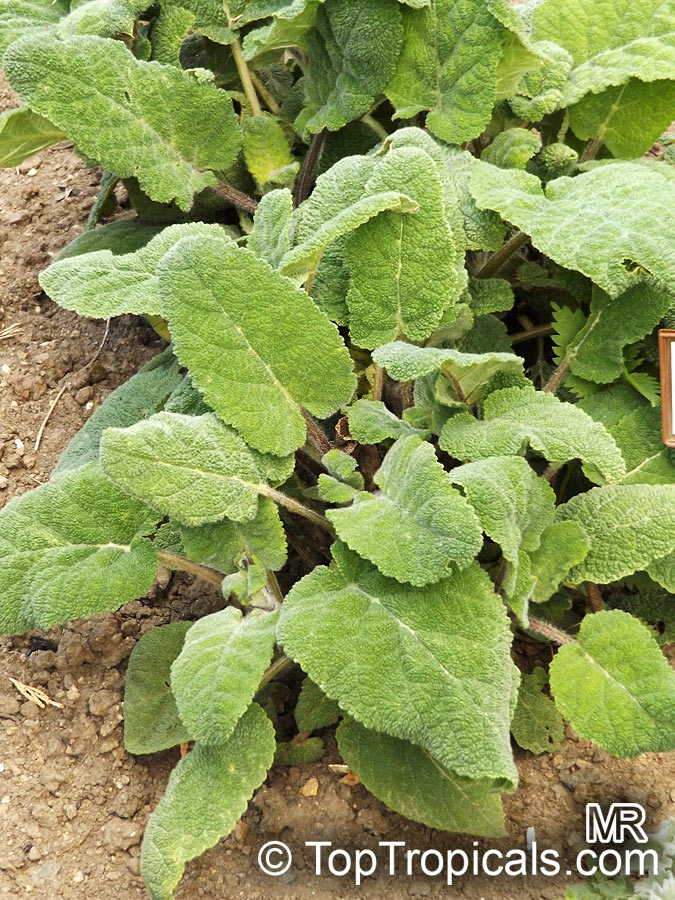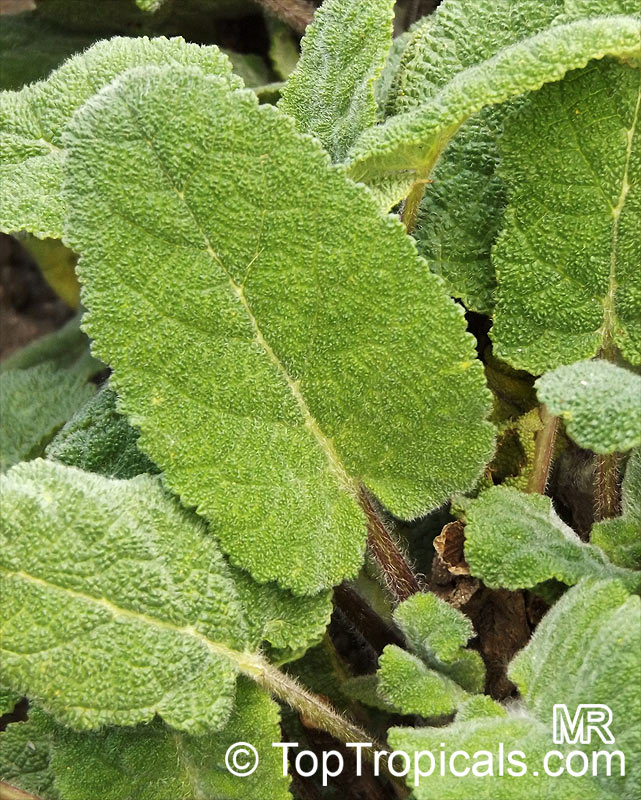Salvia sclarea (Clary Sage)
Top Tropicals Plant Encyclopedia
Botanical name: Salvia sclarea
Common names: Clary Sage, Europe Sage
Family: Lamiaceae
Origin: Mediterranean









The plant is a small shrub reaching 2-5 feet in height, with a beautiful bush shape. Salvia sclarea provides dense foliage, with pointed, serrated leaves that are fragrant when bruised. It enjoys full sun, and produces beautiful, pink, two lipped flowers. These flowers can be seen throughout the spring and summer months, and attract butterflies and hummingbirds to the area.
Salvia sclarea produces an essential oil, which can be used in muscatel flavoring for a number of drinks and in aromatherapy. In ethnomedicine, it is used to treat enlarged spleen and sore throats, stimulate menstruation, and as a spice or herb.
The plant is hardy in USDA Cold Hardiness Zones 9-11 and is quite cold-tolerant when established. A mature Salvia sclarea is capable of withstanding temperatures as low as 30F for a short period of time, making it suitable for use in colder climates. To protect young, newly planted Salvia sclarea, the base of the plant can be covered with dry leaves or straw during periods of extreme cold.
For the best growth, Salvia sclarea prefers to be situated in well-drained soil enriched with compost or fertilizer. Water only as necessary, as soggy soil can lead to root rot and other diseases. If dried out too much, the leaves will turn from green to bleached white and yellow. To avoid this, water slowly but deeply and add a layer of mulch to keep the soil moist. Additionally, pruning back the plant in winter helps promote strong and healthy growth in the upcoming season. With proper care and attention, Salvia sclarea can be a gorgeous and fragrant addition to any garden.
Similar plants: Salvia sclarea (Clary Sage)
- Salvia argentea (Silver Sage)
- Salvia aurea (Brown Salvia)
- Salvia coccinea (Red Salvia)
- Salvia discolor (Andean Sage)
- Salvia dolomitica (South African Sage)
- Salvia elegans (Pineapple Sage)
- Salvia farinacea (Mealy Sage)
- Salvia guaranitica (Anise-scented Sage)
- Salvia hispanica (Chia)
- Salvia lanceolata (Rusty Sage)

